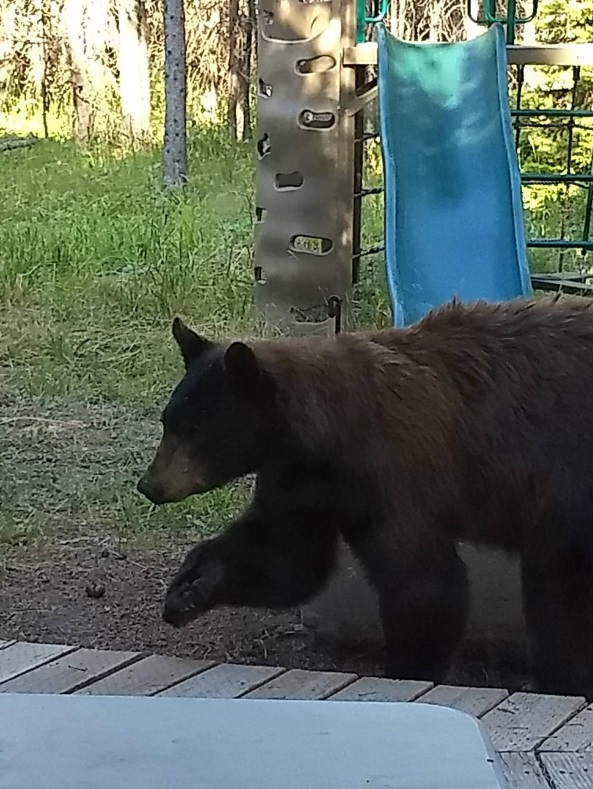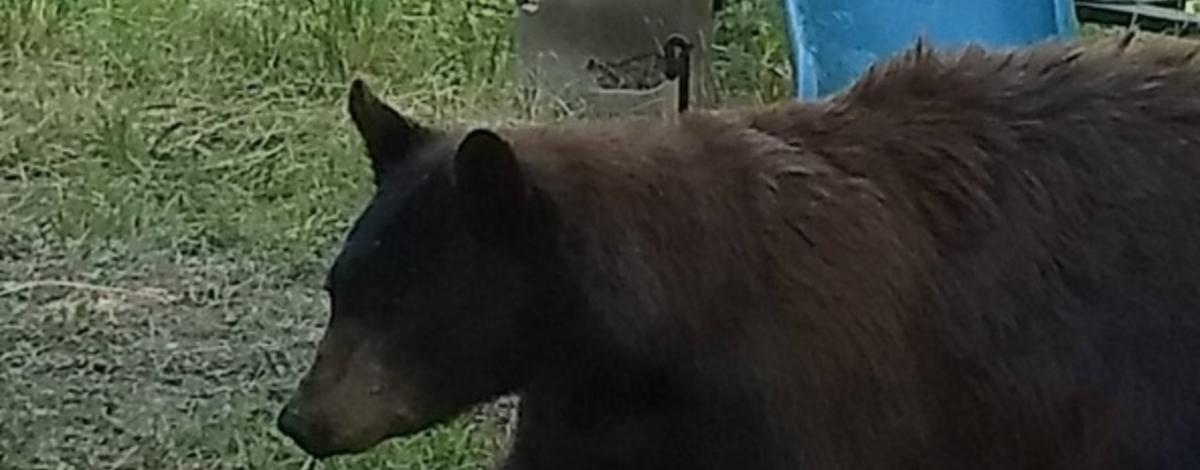Idaho Fish and Game officials lethally removed a black bear on Aug. 9 at Bill’s Island in Island Park. The bear had been spotted by residents for at least two weeks and could not be safely relocated because it had become habituated to searching for food at residences. It was also comfortable near people and was spotted sleeping under porches, walking on decks, and was active day and night.
The bear became food conditioned because it repeatedly found improperly stored garbage and other attractants on the island. A bear that has access to human food will almost always quit acting like a wild bear and usually ends up having to be removed from the population. Additionally, habituated, food-conditioned bears pose more of a threat to human safety than bears that avoid contact with humans and stay in natural habitats.

When living or recreating in bear country, it is essential to keep the area around your house or camp clean. Securing attractants, such as food, garbage, pet food, bird feeders, etc., is the best way to keep people safe, prevent property damage, and avoid the management removal of bears that come into conflict with people.
Residents living in bear country should store their garbage inside or use bear resistant containers. To learn more about them go here.
Here are more tips on avoiding bear conflicts that can cause public safety problems, property damage, and unnecessary deaths to bears and other wildlife:
Tips for homeowners
Bears typically visit houses or other outbuildings if there is food available. Being omnivores, bears are attracted to a wide variety of things, such as garbage, pet food, livestock feed, bird feeders, gardens, fruit trees, etc. Bears often ramp up their feeding in late summer and fall when they’re fattening up for winter hibernation. If a bear visits your property to feed, it’s likely to return, so remove the food as much as is practical, such as locking garbage cans in a garage, taking your pet food in at night, or picking fruit up off the ground and disposing of it away from the area.
Tips for campers
Bears typically visit a campsite for one reason: food. If you remove that attraction, including garbage, dog food, greasy grills, and other attractants, you will rarely, if ever, see a bear in your camp. Campers should also keep food stored in containers to reduce odors, such as plastic bags, bins, and coolers. Store food where bears can’t easily get to it, like inside RVs or vehicles, but don’t bring food into tents. Clean up after cooking and properly dispose of waste. Keeping garbage in a covered container, such as a sealable 5-gallon bucket, can reduce odor from escaping.
If you see a bear in your camp, make a commotion, such as yelling, waving or banging pans. The more people the better, but give the bear plenty of space and make sure it has an easy escape route. If it acts aggressively, your safety is more important than your food or gear.
Backpackers who camp in the backcountry should consider hanging their food at least 10 feet off the ground and 4 feet away from tree trunks, or using bear-proof containers to store it in.
Report bear sightings at campgrounds to campground hosts or the land-management agency (Forest Service, BLM, etc.) or to Fish and Game, especially if the bear shows little or no fear of humans, and/or you have repeat visits.
Hikers, mountain bikers, equestrians and others
If you encounter a black bear, give it space and try to move away, carefully, without taking your eyes off the bear. It will usually leave the area, and you probably should, too. Don’t run. That can trigger a bear to chase you. If you have bear spray, don’t hesitate to use it if the bear approaches, shows no fear, or acts in any way aggressively. Remember bear encounters can happen quickly, so bear spray needs to be accessible at all times, not stashed in a backpack, saddle bag, or other place where it can’t be quickly deployed.

